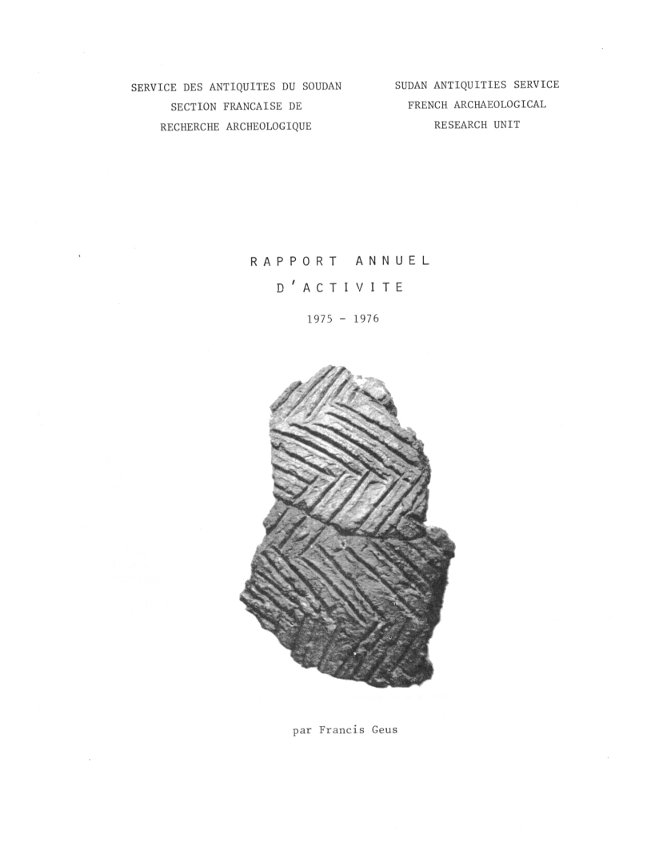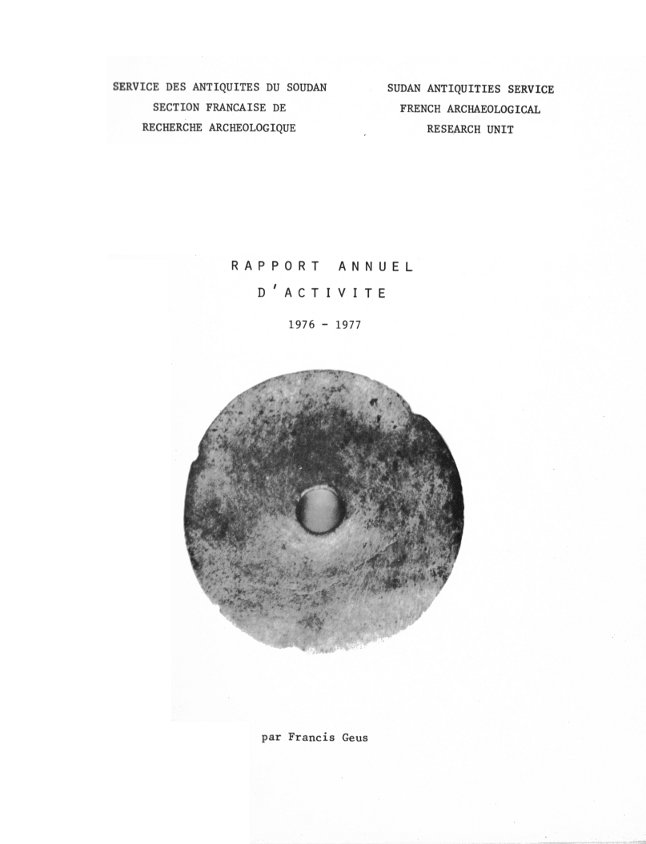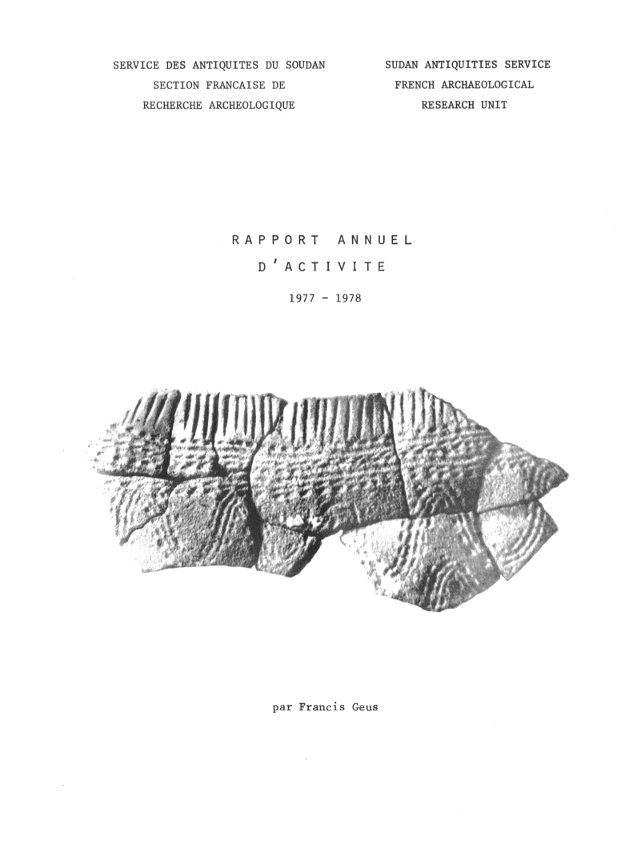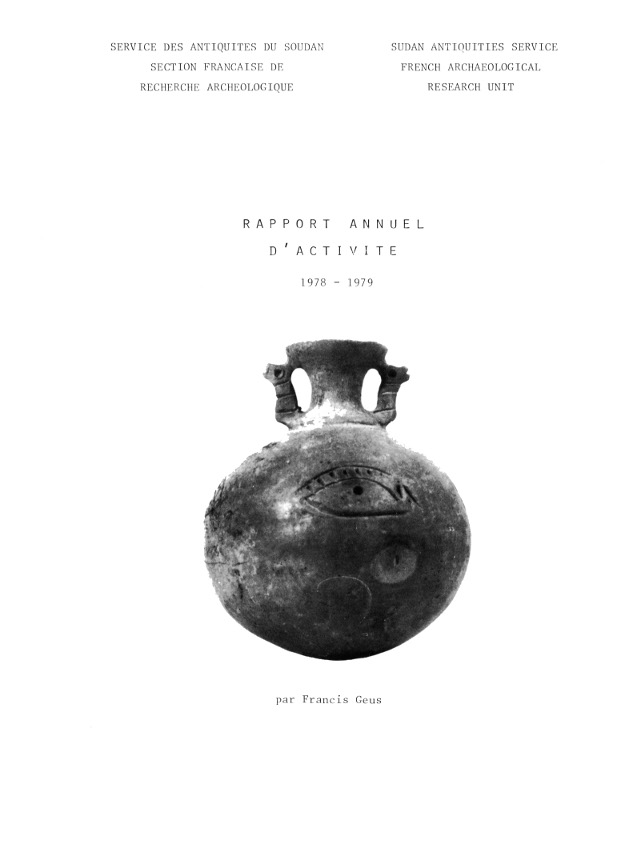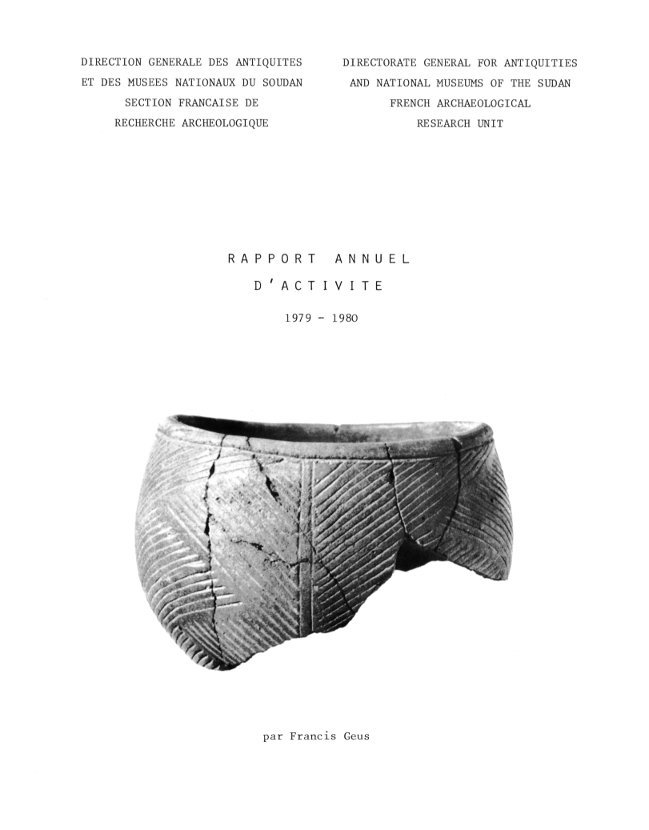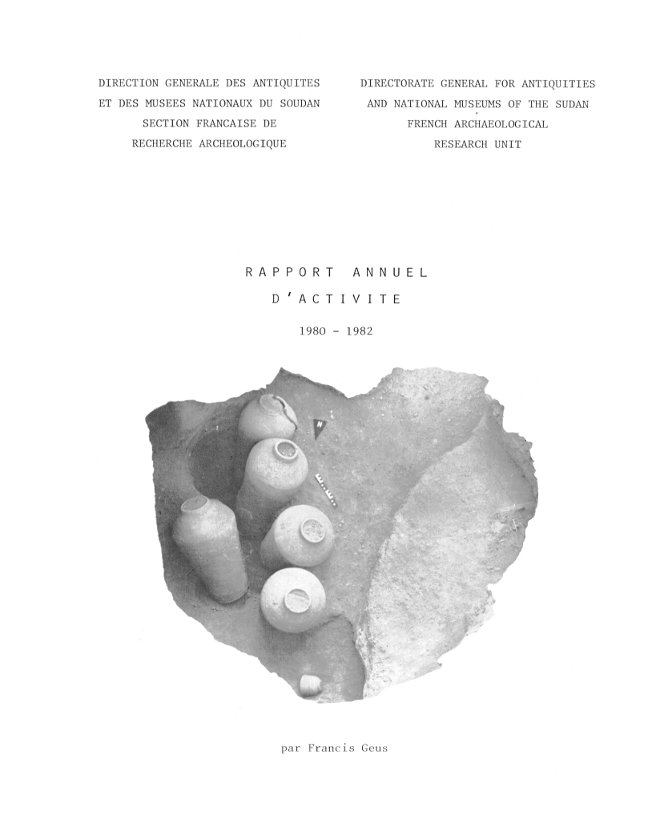For over a thousand years the Byzantine Emperor sat in his palace, ruling over the empire as God’s regent on earth. His was the ultimate authority. The emperor was the font of all law, granter of titles and offices, distributer of largess, master of the Church, commander of the army, head of the bureaucracy, and supreme judge. The decisions of the individual who sat on the throne had repercussions throughout the Byzantine world and far beyond. Decrees, letters, judgments, and commands left Constantinople every day signed by the emperor in red ink and secured with the imperial seal. These seals not only protected and authenticated imperial documents, they also spread the emperor’s image and served as imperial propaganda. It is no accident that while one emperor chose to be depicted as a soldier, another chose to be shown as a civilian. Although Christ accompanies one emperor, another might choose St. Constantine, or the Mother of God, or perhaps simply the cross. Was his title Greek, basileus, or Latin, augustus? Did he want to emphasise his family as an imperial asset or assert his position as autokrator, the sole ruler of God’s empire on earth? The designs of the imperial seals are interesting for more than their artistic value, they provide an insight into the minds and policies of the rulers whose image they bore; they tell us not only how they wished to be viewed by the recipients of their letters, but also how they viewed themselves. Imperial seals, with their titles, images, and projection of divinely sanctioned authority, show the blend of Roman, Hellenistic, and Judaeo-Christian ingredients that went into the Byzantine imperial recipe.
This exhibition presents the imperial lead seals from the Dumbarton Oaks Collection. Sections include: a chronology of the rulers of Byzantium exploring the design and inscriptions of their seals and presenting brief biographies; an analysis of the development of imperial titulature; the iconographic choices made by usurpers; and finally a section on seals that show or reference the imperial family. We hope that after visiting this exhibit you will be inspired to explore the online catalogue of Byzantine seals in the Dumbarton Oaks collection. This project was begun in 2010, and is continually updated as more seals from our collection of 17,000 are catalogued.
Rulers of Byzantium Dynasties of Empire Interlopers and Usurpers Divine Guardians Imperial Titulature
Friday, August 31, 2012
Online Exhibition: God's Regents on Earth: A Thousand Years of Byzantine Imperial Seals
God's Regents on Earth: A Thousand Years of Byzantine Imperial Seals
Wednesday, August 29, 2012
Middle East Librarians Association
Middle East Librarians Association
It is the purpose of the Middle East Librarians' Association to facilitate communication among members through meetings and publications; to improve the quality of area librarianship through the development of standards for the profession and education of Middle East library specialists; to compile and disseminate information concerning Middle East libraries and collections and to represent the judgment of the members in matters affecting them; to encourage cooperation among members and Middle East libraries, especially in the acquisition of materials and the development of bibliographic control; to cooperate with other library and area organizations in projects of mutual concern and benefit; to promote research in and development of indexing and automated techniques as applied to Middle East materials.
Anyone who is employed by an institution to service Middle East library materials in a professional capacity (selection, acquisition, cataloging, indexing, reference work, administration, and/or preparation of research tools), as well as any other person who has an interest in these aspects of Middle East library materials, is eligible for membership in our Association.
• Officers
• Bylaws
(click to download .pdf file, 2007 Bylaws with proposed changes, 2012)
• MELA Notepad
the MELA blog
• MELA Notes
Official journal of MELA
• Other Publications
• Positions
MELA program-Draft • Awards • MENA Librarian's Tool
Box
• Mentorship Program
• Support MELA
Monday, August 27, 2012
Online Resources for Peshitta
Online Resources for Peshitta
The purpose of this page is to concentrate in one place, resources found on the internet that relate to the Aramaic Bible in his best-known version, the Peshitta.
The Peshitta (Syriac: ܦܫܝܛܬܐ for “simple, common, straight, vulgate”, Arabic:”بسيطة”, sometimes called the Syriac Vulgate) is the standard version of the Bible for churches in the Syriac tradition.
This text was compiled and produced by Philipos with the help of Francisco Arriaga and PLGO, and is in the public domain. Copy freely. There are no restrictions on the use of this text. If used in some blog or website, We’d appreciate a link back to http://aramaico.wordpress.com or http://plgo.org , but is not mandatory.
You can download a HTML version of this page with direct links to the files by clicking here.
The original source for this page is here.
Antigo Testamento
Tanakh
Vetus Testamentum Syriace.
1823
Lee, Samuel. British and Foreign Bible Society. [link]
Translatio Syra Pescitto Veteris Testamenti Ex Codice Ambrosiano Sec. Fere VI.
1876-1883
Ceriani, Antonio Maria. Williams & Norgate. [link]
Biblia sacra iuxta versionem simplicem quae dicitur Pschitta. 2 Volumes.
1887-1888
Mar Georges Ebed-Iesu Khayyath (?) for the Dominicans Fathers in Mossul. Mossul – Typis Fratrum Praedicatorum. [link]
The hexaglot Bible
Edward Riches de Levante.
Volume 1: Introdução, Pentateuco [link]
Volume 2: Josué – 2 Reis [link]
Volume 3: 1 Crônicas – Cânticos [link]
Volume 4: Isaías – Malaquias [link]
ܟܬܒܐ ܩܕܝܫܐ ܗ ܕܝܬܩܐ ܥܬܝܩܬܐ.
1913
Trinitarian Bible Society. [link]
Lamsa Bible Online – English Peshitta Translation (OT).
George M. Lamsa. [link]
Pentateuco
Pentatevchvs Syriace.
1787
Georg Wilhelm Kirsch. Sumtibus et typis editoris. [link]
Die syrische Bibel-Version Peschita im Urtext. Volume 1.
1908
Moritz Altschüler. Verlag Lumen. [link]
Pentateuchus Syriace post Samuelem Lee.
1914
British And Foreign Bible Society. [link]
Salmos
Psalmi Davidis Regis, & Prophetae, lingua Syriaca nunc primum, ex antiquissimus codicibus manuscriptis, in lucem editi à Thoma Erpenio. Qui & versionem Latinam adjecit.
1625
Thomas Erpenio. Leiden: Ex typographia Erpenia linguarum orientalium, prostant apud Joh. Maire, & Elzevirios. [link]
Liber Psalmorum Davidis idiomate Syro.
1737
Romae : ex typographia Petri Ferri. [link]
Psalterivm Syriacvm / recensuit et Latine vertit Thomas Erpenivs. Notas philologicas et criticas addidit Ioannes Avgvstvs Dathe.
1768
Johann August Dathe. Halae : sumtibus Orphanotrophei. [link]
Psalterium Syriace.
1822/1825
Samuel Lee. Londini : Societatis Biblicae. [link] [link2] [link3]
ܟܬܒܐ ܕܡܙܡܘܪܐ ܕܕܘܝܕ ܡܠܟܐ ܘܢܒܝܐ.
1846
Constantinopla?. [link]
ܟܬܒܐ ܕܡܙܡܘܪܐ ܕܕܘܝܕ ܡܠܟܐ ܘܢܒܝܐ.
1866
Mosul : Tab̒ a de-Kaldājē. [link]
Psalterium syriacum.
1877
Joseph David. Mausili : Typis Fratrum Praedicatorum. [link]
Psalterium tetraglottum: Graece, Syriace, Chaldaice, Latine.
1879
Eberhard Nestle ; Samuel Gideon Frederic Perry. Fr. Fues. [link]
Psalterium syriacum : juxta versionem simplicem, pschittam vulgo dictam ad usum cleri Ecclesiae Antiochenae Syrorum.
1885
Mausilii : Typ. Fratrum Praedicatorum. [link]
A Translation of the Syriac Peshito Version of the Psalms of David.
1861
Andrew Oliver. E. P. Dutton and Company. [link]
Outras Partes do A.T.
Jonas Propheta, Syriacè Stylo Stranghelico.
1802
Lut. Parisiorum. [link]
The book of Jonah in four Semitic versions, viz. Chaldee, Syriac, Aethiopic, and Arabic, with corresponding glossaries.
1857
William Wright. Williams and Norgate. [link]
Libris Veteris Testamenti Apocryphi Syriace.
1861
Paul Anton de Lagarde. Lipsiae F.A. Brockhaus. [link]
The fourth book of Maccabees and Kindred Documents in Syriac.
1895
Bensly, Robert Lubbock, ed; Barnes, William Emery, tr. Cambridge, The University press. [link]
The Apocalypse of Baruch: Translated from the Syriac, Chapters I-LXXVII.
1896
Robert Henry Charles. A. and C. Black. [link]
An apparatus criticus to Chronicles in the Peshitta version, with a discussion of the value of the Codex Ambrosianus.
1897
W. E. Barnes. Cambridge, Univ. Press. [link]
The second letter of Baruch: a translation from the Syriac.
1898
William Carpenter Bompas. Winnipeg : R.D. Richardson. [link]
A critical examination of the Peshitta version of the Book of Ezra.
1922
Charles Arthur Hawley. Columbia Univ. Press. [link]
Miscelânea
Excerpta Veteris Testamenti syriaci.
1682
Christoph Cellarius. sumtu Io. Bielcki. [link]
Palaestra linguarum orientalium.
1702
Georg Otho. [link]
De prophetarum minorum versionis syriacae quam peschito dicunt indole, dissertationes philologico – criticae.
1827
Carolus Augustus Credner. Typis Dieterichianis. [link]
Specimina e versione syriaca Peschito selecta, quae cum vocum notionibus suae institutioni ad linguam aramaeam ducenti.
1846
Swyghuisen Groenewoud. L. E. Bosch et Filium. [link]
Manuscritos
Microfilms des manuscrits syriaques du Mt Sinai – Université Catholique de Louvain, Institut Orientaliste.
Ancien Testament (Sinai Syr)
Center for the Preservation of Ancient Religious Texts (CPART – BYU) – Brown Manuscripts.
SMC 1-2 Principal Work: Genesis to Judges; Language: Syriac; Folios: 108; Date: 1500
SMC 1-3 Principal Work: Psalms; Language: Syriac / Garshuni; Folios: 117; Date: 1500
Virtual Manuscript Room (Birmingham) – Coleção Mingana
Mingana Syriac 11 – (dated 1702). Contains Old Testament books and other religious texts.
Biblioteca Medicea Laurenziana – TECA Digitale
Or. 013 Vetus Testamentum Syriacum
Or. 014 Vetus Testamentum Syriacum
Or. 058 Vetus Testamentum Syriacum
Plut.01.12 Psalterium characteribus Syriacis exaratum
Novo Testamento
Edições
Liber Sacrosancti Evangelii de Iesu Christo Domino & Deo Nostro.
1555
John Albert Widmanstadt. Vienna: Michael Zimmermann [Cymbermannus. [link]
Novum Domini Nostri Iesv Christi Testamentvm Syriace – littera hebraice.
1575
Plantin. Antverpiae : Plantin. [link]
Novum Domini Nostri Iesv Christi Testamentvm Syriace.
1621
Martin Trost. [link]
Novum Domini Nostri Iesv Christi Testamentvm Syriace.
1664
Aegidius (Giles) Gutbier. Typis & Impensis Autoris. [link] [link2] [link3]
Novum Testamentum Syriacum et Arabicum 1 : Sacrosancta Jesu Christi Evangelia.
1703
Sacra Congregatio de Propaganda Fide. [link]
Novum Testamentum Syriacum et Arabicum 2 : Acta apostolorum, Epistolae Catholicae et Divi Pauli cum Apocalypsi D. Joannis.
1703
Sacrae Congregationis de Propaganda Fide. [link]
Novum Domini Nostri Iesv Christi Testamentvm Syriacum.
1709/1717
Leusden & Schaaf. Typis Joh : Mulleri, Joh : fil. [link] [link2] [link3]
Novum Testamentum Syriace.
1816
Samuel Lee & Claude Buchanan. British and Foreign Bible Society. [link]
ܟܬܒܐ ܕܐܘܢܓܠܝܘܢ ܩܕܝܫܐ ܕܡܪܢ ܝܫܘܥ ܡܫܝܚܐ Gospels/Evangelhos.
1829
Thomas Pell Platt. British and Foreign Bible Society. [link]
ܟܬܒܐ ܕܕܝܬܩܐ ܚܕܬܐ ܕܡܪܢ ܝܫܘܥ ܡܫܝܚܐ.
1878-86
J. Perkins. [link] [link2]
The Syriac New Testament.
1890
Ebenezer Henderson. Bagster & Sons. [link]
Les saints évangiles d’après la Pschitta.
1896
Mossoul : Impr. des Pères Dominicains. [link]
Les actes des apotres, les épitres, l’apocalypse d’après La Pschitta.
1898
Mossoul : Impr. des Pères Dominicains. [link]
Le Nouveau testament d’après La Pschitta – Gospels/Evangelhos.
1898
Mossoul : Impr. des Pères Dominicains. [link]
Les actes des apotres, les épitres, l’apocalypse d’après La Pschitta.
1900
Mossoul : Impr. des Pères Dominicains. [link]
Tetraeuangelium Sanctum: juxta simplicem Syrorum versionem adfidem codicum, massorae, editionum denuo recognitum.
1901
Philip Edward Pusey, George Henry Gwilliam. Oxonii, e Typographeo Clarendoniano. [link]
The New Testament in Syriac.
1905-1920
British and Foreign Bible Society. [link]
The Hexaglot Bible – Volume 5 – The Gospels.
1906
Edward Riches de Levante. New York, Funk & Wagnalls company. [link]
The Hexaglot Bible – Volume 6 – Acts-Revelation.
1906
Edward Riches de Levante. New York, Funk & Wagnalls company. [link]
Traduções
Horae Aramaicae: comprising concise notices of the Aramean dialects in general, and of the versions of Holy Scripture extant in them: a translation of the Gospel according to St. Mathew, and of the Epistle to the Hebrews, from the ancient Peschito Syriac.
1843
John Wesley Etheridge. Simpkin , Marshall. [link]
The Syrian churches : their early history, liturgies, and literature : with a literal translation of the four gospels from the Peschito, or canon of holy scripture in use among the oriental Christians from the earliest times.
1846
John Wesley Etheridge. London : Longman, Green, Brown and Longmans. [link]
The apostolical Acts and Epistles, from the Peschito : or ancient Syriac to which are added, the remaining Epistles, and the book of Revelation, after a later Syrian text.
1849
John Wesley Etheridge. Longman, Green, Brown and Longmans. [link]
The New Testament : or, The book of the holy gospel of our Lord and our God, Jesus the Messiah a literal translation from the Syriac Peschito version.
1851
James Murdock. Stanford and Swords. [link]
A translation, in English daily used, of the Peshito-Syriac text, and of the received Greek text, of Hebrews, James, 1 Peter, and 1 John.
1889
William Norton. W. K. Bloom. [link]
Lamsa Bible Online – English Peshitta Translation (NT).
George M. Lamsa. [link]
Peshitta Aramaic/English Interlinear New Testament.
Paul Younan. [link]
Manuscritos
Codex Khabouris
Codex Khabouris
Biblioteca Medicea Laurenziana – TECA Digitale
Or.004 Novum Testamentum Syriacum cum Interpretatione Carsciunica
Center for the Preservation of Ancient Religious Texts (CPART – BYU) – Brown Manuscripts
SMC 2-2 Principal Work: Entire New Testament; Language: Syriac; Folios: 274
Biblioteca Medicea Laurenziana – TECA Digitale
Plut. I No. 56 Evangelia characteribus Syriacis exarata
Plut. I No. 58 Evangelia characteribus Syriacis exarata
Virtual Manuscript Room (Birmingham) – Coleção Mingana
Mingana Syriac 148 – An East Syrian manuscript from the seventeenth century (dated 1613). Contains an important text of the Peshitta version of the New Testament and other religious texts.
Goodspeed Manuscript Collection – University of Chicago Library.
Ms. 716 – fragmentos
Ms. 823 – fragmentos
Ms. 829 – fragmentos
Microfilms des manuscrits syriaques du Mt Sinai – Université Catholique de Louvain, Institut Orientaliste
Nouveau Testament (Sinai Syr)
El Kadada (Sudan) Reports Online
Les rapports annuels de la SFDAS relatifs à la fouille archéologique de El Kadada dirigée pa Francis Geus de 1975 à 1984
All of these articles were originally published in Archéologie du Nil Moyen
Friday, August 10, 2012
Administrative
AWOL has passed 800,000 page views, and is now approaching 4800 subscribers by
email, just a little more than three years after I deployed that function.
In addition, a handful of subscribers get the feed in other ways. I'm
gratified that such a large number of you find AWOL interesting enough
to voluntarily add another piece of email to your busy queues.
Traffic on AWOL will probably be light for the next two week while I focus my attention on some other things. In the meantime I invite you to amuse yourself by browsing through Bookplates of Scholars in Ancient Studies. If any of you have additions, corrections or comments on that, please do get in touch with me. I'm particularly interested if you can surface other interesting bookplates of scholars of antiquity.
As always, comments - online or offline - about AWOL are welcome.
Earlier administrative notes with user statistics have been posted in August 2012, April 2012, March 2012, November 2011, October 2011, July 2011, April 2011, January 2011, December 2010, October 2010, August 2010, July 2010, May 2010, and January 2010.
Traffic on AWOL will probably be light for the next two week while I focus my attention on some other things. In the meantime I invite you to amuse yourself by browsing through Bookplates of Scholars in Ancient Studies. If any of you have additions, corrections or comments on that, please do get in touch with me. I'm particularly interested if you can surface other interesting bookplates of scholars of antiquity.
As always, comments - online or offline - about AWOL are welcome.
Earlier administrative notes with user statistics have been posted in August 2012, April 2012, March 2012, November 2011, October 2011, July 2011, April 2011, January 2011, December 2010, October 2010, August 2010, July 2010, May 2010, and January 2010.
Index of Christian Art Digital Books
Index of Christian Art Digital Books
Welcome to The Index of Christian Art online publications! In the firm belief that we all need to share as much scholarship as is possible, the Index of Christian Art is pleased to present an occasional series of online conference proceedings and papers. When it is not possible to publish in the traditional hardcopy format we will use the Internet for online publications.The first set of papers are the conference proceedings from a one day event held in Princeton University on Thursday July 12th 2012 which was devoted to Digitization and The Arts. The papers from that colloquium are presented here as they were delivered and preserve the spontaneity of the speakers. Short biographies are included.Colum Hourihane
Director, Index of Christian ArtJuly 12th, 2012
The Digital World of Art HistoryJune 26th, 2013
Digital World of Art History 2013: From Theory to Practice
And see also Index of Christian Art Online
Thursday, August 9, 2012
Byzantium 1200
Byzantium 1200

Welcome to Byzantium 1200. Byzantium 1200 is a project aimed at creating computer reconstructions of the Byzantine Monuments located in Istanbul, TURKEY as of year 1200 AD.
INTRODUCTION
CONTENTS
HIPPODROME
WHAT'S NEW
MUSEUM
CONTACT
LINKS
AWARDS

Wednesday, August 8, 2012
Open Access Journal: Marq, arqueología y museos
Marq, arqueología y museos
ISSN: 1885-3145
ISSN: 1885-3145

2007 2006 2005
See the full List of Open Access Journals in Ancient Studies
Monday, August 6, 2012
Journal of Cuneiform Studies vol. 64 (2012)
Journal of Cuneiform Studies vol. 64 (2012) is now available online to those who subscribe or have access via JSTOR's Current Scholarship Program.
Table of contents
Reading Sumerian Names, II: Gilgameš (pp. 3-16)
Gonzalo Rubio
The Economic Status of Governors in Ur III Times: An Example of the Governor of Umma (pp. 17-30)
Marek Stępień
Three New Nippur Manuscripts of the Ur Lament, I (pp. 31-37)
Nili Samet and Selim F. Adali
Droit et divination: deux manières de rendre la justice. À Propos de dīnum, uṡurtum et awatum (pp. 39-56)
Jean-Jacques Glassner
A Musicological Interpretation of the Akkadian Term siḫpu (pp. 57-64)
Leon Crickmore
Spinning and Weaving Wool in Ur III Administrative Texts (pp. 65-82)
Richard Firth and Marie-Louise Nosch
Hittite dammeli-: Jurare in Verba Magistri? (pp. 83-86)
Jaan Puhvel
Esarhaddon’s Succession Treaty at Tell Tayinat: Text and Commentary (pp. 87-123)
Jacob Lauinger
Building XVI and the Neo-Assyrian Sacred Precinct at Tell Tayinat (pp. 125-143)
Timothy P. Harrison and James F. Osborne
Critical Review: Zu den vor-Ur III-zeitlichen Keilschrifttexten des World Museum, Liverpool (pp. 145-162)
Ingo Schrakamp
and
the full list of journals in JSTOR with substantial representation of the Ancient World
Some readers of AWOL may be interested in
JSTOR's Developing Nations Access Initiative:
Since, 2008, JSTOR has waived or offered reduced participation fees for any academic or not-for-profit institution in developing countries (and all of Africa).
And see also AWOL's
PACTOLS (Peuples, Anthroponymes, Chronologie, Toponymes, Œuvres, Lieux et Sujets)
Thesaurus PACTOLS
Les PACTOLS sont un thesaurus géré par le programme FRANTIQ. Ils servent à interroger le catalogue collectif indexé (CCI) et d'autres bases externes. PACTOLS est l'acronyme de Peuples, Anthroponymes, Chronologie, Toponymes, Oeuvres, Lieux et Sujets. Chaque lettre correspond à un microthesaurus.
Thématiques : l'archéologie, de la Préhistoire à la "Grande Guerre" et l'Antiquité sous tous ses aspects (société, linguistique, philosophie, économie, épigraphie, etc.)
Les PACTOLS ont été créés dès 1987 suite à une forte demande de la communauté scientifique. Ils ne cessent pas d’évoluer, tout en respectant les normes des thesauri poly-hiérarchiques et multilingues. Ils sont traduits en anglais, italien, allemand et espagnol. Les thesauri PACTOLS sont évolutifs (mise à jour constante) aussi bien pour la sémantique que pour l’informatique. Leurs évolutions sont désormais décidées au sein du groupe de travail PACTOLS.
Les logiciels, OpenTheso et OpenTheso2 , véritables logiciels de gestion et de recherche documentaire (LGRD), permettent une gestion autonome, indépendante d’une base de données précise. Les PACTOLS sont exportables en xml et en format SKOS.
Les thesaurus sont consultables en ligne par le menu "Thésaurus Pactols" ; une version imprimable (réservée aux personnes inscrites sur le site) est accessible après téléchargement.
Dans le cadre d'un appel d’offre du TGE Adonis, FRANTIQ a proposé un essai de transformation des PACTOLS en ontologie (IdR2D) et a participé au consortium "Référentiels", pour la traduction. Depuis les PACTOLS servent de référentiels d'indexation sur le portail ISIDORE du TGE Adonis.
Des règles d’écriture régissent la création de nouveaux descripteurs.
Des statistiques permettent de faire régulièrement le point sur l’évolution des PACTOLS : nouveaux termes et nouveaux termes traduits.
BYU Multi-spectral Imaging Project
BYU Multi-spectral Imaging Project
The Ancient Textual Imaging Group at Brigham Young University has pioneered developments into enhancing texts of deteriorated and damaged papyri using multi-spectral imaging. This process has rendered legible many stained, discolored, or faded portions of ancient documents. In effect, the process has restored the documents to a state of legibility that they have not possessed since antiquity. This research collection represents the completion of a two-year venture by the Ancient Textual Imaging Group to capture, process, and provide public access to high-quality multi-spectral images of hundreds of legibly problematic papyrus documents from collections at the University of Michigan; University of California, Berkeley; and Columbia University. This project was funded by the National Endowment for the Humanities.
Saturday, August 4, 2012
Petras Excavations
Ανασκαφές Πετρά - Petras Excavations
Με την ευκαιρία της συμπλήρωσης 25 ετών έρευνας στον Πετρά Σητείας, τη Μινωική πόλη και το ανάκτορο της Σητείας, δημιουργήσαμε αυτόν τον δικτυακό τόπο, το καλοκαίρι του 2010. Παρουσιάζονται συνοπτικά όλες οι έρευνες, ανασκαφικές και επιφανειακές, καθώς και οι μελέτες από το 1985 ως σήμερα. Επίσης παρουσιάζονται οι δράσεις εξωστρέφειας, τα εκπαιδευτικά προγράμματα, οι εκθέσεις και οι εργασίες ανάδειξης του χώρου. Από το 2006 ο Πετράς είναι ανοικτός στους πολίτες και τους επισκέπτες της Σητείας (Αρχαιολογικό Μουσείο Σητείας, τηλ. 28430 23917).
Παράλληλα ο επισκέπτης του δικτυακού τόπου μπορεί να ενημερώνεται για τους συντελεστές της έρευνας, την αυξανόμενη βιβλιογραφία, αλλά και να δει πλήθος φωτογραφιών από τις ανασκαφές, τα ευρήματα και τους ανθρώπους που έχουν δουλέψει και έχουν επισκεφθεί τον Πετρά.
Επιδίωξή μας είναι η διαρκής ανανέωση του δικτυακού τόπου και περιμένουμε τις παρατηρήσεις σας που θα μας βοηθήσουν να τον βελτιώσουμε.
On the occasion of the 25th anniversary of the research activities at Petras, the Minoan urban settlement and palace of Siteia, the present web-site was created, in the summer of 2010.
All excavations, surface surveys and studies, since 1985, are presented here. Furthermore the public outreach, educational programs, exhibitions and the presentation of the site to the public are described. Since 2006 the Petras site is open to the citizens and the visitors of Siteia (Archaeological Museum of Siteia, tel. 28430 23917).
The visitor of the web-site can access information on the researchers working at Petras and the increasing bibliography; furthermore many photographs are available of the excavations, the finds and the people who worked or visited the excavations.
The web-site will be constantly up-dated and we would appreciate your comments, which will help us to improve it.
Bibliography
2011
Catapotis M., Y. Bassiakos & Y. Papadatos 2011. Reconstructing Early Cretan Metallurgy: Analytical Evidence from Kephala Petras, Siteia, in P.P.Betancourt & S.Ferrence (eds), Metallurgy: Understanding How, Learning Why, Studies in Honor of James D. Muhly, Prehistory Monographs 29, Philadelpheia, Pensylvania, 69-78. Download:M.Catapotis, Y.Bassiakos & Y.Papadatos 2011.pdf (2.19 MB )
Tsipopoulou, M. & E. M. Alberti, 2011. LM IB Petras: the pottery from Room E in House II.1, in T.M. Brogan & E. Hallager (eds), LM IB pottery relative chronology and regional differences, Acts of a workshop held at the Danish Institute at Athens in collaboration with the INSTAP Study Center for East Crete, 12-29 June 2007, Athens 2011, 463-498; E.S. Banou, An introduction to the LM IB pottery from Poros: a response to Metaxia Tsipopoulou and Maria Emanuela Alberti, 499-506; Discussion, 507-511; General discussion, 629-646; Bibliography, 13-38. Download:M.Tsipopoulou- M.E.Alberti 2011.pdf (2 MB )
2010
Tsipopoulou, M. & E. Hallager, 2010. The Hieroglyphic Archive at Petras, Siteia, Monographs of the Danish Institute at Athens, Vol. 9, Athens. Download: M.Tsipopoulou-E.Hallager 2010.pdf (59.56 MB)
D'Annibale, C., 2010. The Obsidian, in Tsipopoulou, M. & E. Hallager (eds), The Hieroglyphic Archive at Petras, Siteia, Monographs of the Danish Institute at Athens, Vol. 9, Athens, 207-219. Download: C.D'Annibale 2010.pdf (20.48 MB)
Mylona, D., 2010. The Bones, in Tsipopoulou, M. & E. Hallager (eds), The Hieroglyphic Archive at Petras, Siteia, Monographs of the Danish Institute at Athens, Vol. 9, Athens, 221-231. Download: D.Mylona 2010.pdf (14.68 MB)
Τσιποπούλου, Μ., 2010. Προανακτορική Ταφική Βραχοσκεπή στον Πετρά Σητείας-Πρώτη Ανακοίνωση, in Αρχαιολογικό Έργο Κρήτης 1, Πρακτικά της 1ης συνάντησης, Ρέθυμνο, 28-30 Νοεμβρίου 2008, 121-133. Download: Αρχαιολογικό Έργο Κρήτης 1.pdf (4.33 MB)
Triantaphyllou, S., 2010, Report of Human Bone Preliminary Work in 2008, Appendix in Τσιποπούλου 2010, 125-129
2009
Triantaphyllou, S., 2009. EM/MM Human Skeletical Remains From East Crete: The Kephala Petras Rock Shelter, Siteia, And the Livari Tholos Tomb, Skiadi, in KENTRO, The Newsletter of the INSTAP Study Center for East Crete, vol.12, (Fall 2009), 19-23. Download: S.Triantaphyllou 2009 .pdf (1.65 MB)
2008
D' Annibale, C., 2008. Obsidian in transition: the technological reorganization of the obsidian industry from Petras Kephala (Siteia) between Final Neolithic IV and Early Minoan I, in Isaakidou, V. & P. D. Tomkins (eds), Escaping the Labyrinth: The Cretan Neolithic in Context, Sheffield Studies in Aegean Archaeology 8, Oxford,191-200. Download: C.D'Annibale 2008.pdf (816.29 KB)
Papadatos, Y., 2008. The Neolithic-Early Bronze Age Transition in Crete: New Evidence from the Settlement at Petras Kephala, Siteia, in Isaakidou, V. & P. D. Tomkins (eds), Escaping the Labyrinth: The Cretan Neolithic in Context, Sheffield Studies in Aegean Archaeology 8, Oxford, 261-275. Download: Y.Papadatos 2008 .pdf (4.99 MB)
Τσιποπούλου, Μ. & Κ. Ζερβάκη, 2008. Ανάδειξη Αρχαιολογικού Χώρου Πετρά Σητείας, Μινωική Πόλη και Ανάκτορο, in Μπούνια, Α., Ν. Νικονάνου, & Μ. Οικονόμου (eds), Η Τεχνολογία στην Υπηρεσία της Πολιτιστικής Κληρονομιάς: Διαχείριση, Εκπαίδευση, Επικοινωνία, Αθήνα, 567-577. Download: Τσιποπούλου-Κ.Ζερβάκη 2008.pdf (7.65 MB)
2007
Haggis, D., 2007. Stylistic Diversity and Diacritical Feasting at Protopalatial Petras: A Preliminary Analysis of the Lakkos Deposit, AJA 111, No. 4, 715-775. Download: D.C.Haggis 2007.pdf (2.1 MB)
Nodarou, E., 2007. Exploring Patterns of Intra Regional Pottery Distribution in Late Minoan IIIA-B East Crete: The Evidence from the Petrographic Anlaysis of the Three Ceramic Assemblages, in Waksman, S. Y. (ed.), Archaeometric and Archaeological Approaches to Ceramics, BAR International Series 1961, Oxford, 75-83. Download: E.Nodarou 2007.pdf (6.31 MB)
Papadatos, Y., 2007. The Beginning of Metallurgy in Crete: New Evidence from the FN-EM I Settlement at Kephala Petras, Siteia, in Day, P.M. & R.C.P. Doonan (eds), Metallurgy in the Early Bronze Age Aegean, Sheffield Studies in Aegean Archaeology, 154-167. Download: Y.Papadatos 2007.pdf (13.32 MB)
Τsipopoulou, Μ., 2007. The Central Court of the Palace of Petras, in Betancourt, P. P., M.C. Nelson & H. Williams (eds), Krinoi kai Limenes, Studies in Honor of Joseph and Maria Shaw, Philadelphia, Pennsylvania, 49-59. Download: M.Tsipopoulou 2007.pdf (6.87 MB)
2006
Burke, B., 2006. Textile Production at Petras: The Evidence from House II, Πεπραγμένα του Θ΄ Διεθνούς Κρητολογικού Συνεδρίου, Ελούντα 2001, Α1, Ηράκλειο, 279-295. Download: B.Burke 2006.pdf (12.81 MB)
D'Annibale, C., 2006. Production and Consumption of Obsidian in the Siteia Bay Area: Final Neolithic through Late Minoan, Πεπραγμένα του Θ΄ Διεθνούς Κρητολογικού Συνεδρίου, Ελούντα 2001, Α1, Ηράκλειο, 333-345. Download: C.D'Annibale 2006.pdf (9.52 MB)
Rupp, D. W., 2006. Political Power Posturing at Petras, Siteia? A New MM IA/B Conoid Stamp Seal from Sector III, Πεπραγμένα του Θ’ Διεθνούς Κρητολογικού Συνεδρίου, Ελούντα 2001, Α1, Ηράκλειο, 263-277. Download: D.W.Rupp 2006.pdf (16.28 MB)
Τsipopoulou, Μ., 2006. Counting Sherds at Neopalatial Petras, Siteia, East Crete: Integrating Ceramic Analysis with Architectural Data, in Papaconstantinou, D. (ed.), Deconstructing Context: A Critical Approach to Archaeological Practice, Oxford, 138-158. Download: M.Tsipopoulou 2006.pdf (19.57 MB)
Τσιποπούλου, Μ. & H. Dierckx, 2006. Υστερομινωικό ΙΑ Σπίτι Ι.1 στον Πετρά Σητείας: Δομή, Λειτουργία και Κατανομή των Ευρημάτων, Πεπραγμένα του Θ’ Διεθνούς Κρητολογικού Συνεδρίου, Ελούντα, 2001, Α1, Ηράκλειο, 297-315. Download: M.Tsipopoulou & H.Dierckx 2006.pdf (14.76 MB)
Χρυσικοπούλου, Ε., 2006. Τεχνολογικές παρατηρήσεις στα κονιάματα του Πετρά Σητείας: Η ποικιλία που ξαφνιάζει, Πεπραγμένα του Θ’ Διεθνούς Κρητολογικού Συνεδρίου, Ελούντα 2001, Α1, Ηράκλειο, 317-331. Download: Χρυσικοπούλου 2006.pdf (10.72 MB)
2005
Μαυρουδή, Ν., 2005. Η Νεοανακτορική Οικία ΙΙ Πετρά Σητείας, μελέτη για την απόκτηση Μεταπτυχιακού Διπλώματος, Πανεπιστήμιο Κρήτης (unpublished).
2003
Πούλου - Παπαδημητρίου, Ν., 2003. Μεσοβυζαντινή κεραμική από την Κρήτη, 9ος -12ος αιώνας, 7ο Διεθνές Συνέδριο Μεσαιωνικής Κεραμικής της Μεσογείου, Θεσσαλονίκη 1999, Αθήνα, 211-226. Download: Πούλου-Παπαδημητρίου 2003.pdf (23.19 MB)
Τσιποπούλου, Μ., 2003. Ελαιόλαδο στη Nεοανακτορική Σητεία. Συγκέντρωση, Αποθήκευση και Ανακατανομή στο Πλαίσιο της Ανακτορικής Οικονομίας του Πετρά, in «Ελιά και Λάδι στην Κρήτη», Πρακτικά Διεθνούς Συμποσίου, Σητεία 23-25 Μαΐου 2002, 56-76. Download: M.Τσιποπούλου 2003.pdf (29.16 MB)
2002
Τsipopoulou, Μ., 2002. Petras, Siteia: The Palace, the Town, the Hinterland and the Protopalatial Background, in Driessen, J., I. Schoep & R. Laffineur (eds), Monuments of Minos, Rethinking the Minoan Palaces, Proceedings of the International Workshop “Crete of the Hundred Palaces?” held at the Université Catholique de Louvain, Louvain-la-Neuve, 14-15 December 2001, Aegaeum 23, 133-144. Download: M.Tsipopoulou 2002.pdf (7.93 MB)
Tsipopoulou, M. & M. Wedde, 2002. Sitia,Archäologisches Museum,Sitia – Petras, in Corpus der Minoischen und Mykenischen Siegel, V, Supplementum 3,2, 513, 518.
2001Τσιποπούλου, Μ., 2001. Πετράς Σητείας, ΑΔ 51 (1996), Β’2, Χρονικά, 649-651. Download: Τσιποπούλου 2001.pdf (4.36 MB)
2000
Τσιποπούλου, Μ. & M. Wedde, 2000. Διαβάζοντας ένα χωμάτινο παλίμψηστο: Στρωματογραφικές τομές στο ανακτορικό κτίριο του Πετρά Σητείας, Πεπραγμένα του H’ Κρητολογικού Συνεδρίου, Ηράκλειο 1996, Α3, Ηράκλειο, 359-377. Download: M.tsipopoulou-M.Wedde 2000.pdf (24.03 MB)
1999
Παπατσαρούχα, E., 1999. Πετράς Σητείας: Η Ανακτορική Πόλη της Μινωικής Εποχής, Corpus, τεύχος 9, Οκτώβριος, 10-13. Download: Παπατσαρούχα Corpus 1999.pdf (30.61 MB)
Tsipopoulou, Μ., 1999a. Before, During, After: Architectural Phases of the Palatial Building at Petras, Siteia, in Betancourt, P.P., V. Karageorghis, R. Laffineur & W.-D. Niemeier (eds), MELETHMATA, Studies in Aegean Archaeology Presented to Malcolm H. Wiener as He Enters His 65th Year, Aegaeum 20, Vol. III, 847-859. Download: M.Tsipopoulou1999.pdf (16.19 MB)
Τsipopoulou, Μ., 1999b. From Local Centre to Palace: The Role of Fortification in the Economic Transformation of the Siteia Bay Area, East Crete, in Laffineur, R. (ed.), POLEMOS: Le contexte guerrier en Égée à l'âge du Bronze. Actes de la 7e Rencontre égéenne internationale, Université de Liège, 14-17 avril 1998, Aegaeum 11, 179-190. Download: M.Tsipopoulou 1999a.pdf (26.26 MB)
1998
Τsipopoulou, Μ., 1998. The Hieroglyphic Archive at Petras, Siteia, in Rougemont, F. & J.-P. Olivier (eds), Recherches Récentes en Épigraphie Créto-Mycénienne, Semaine d’Epigraphie Creto-Mycénienne, Organisée par l’Ecole Française d’Archéologie, Athènes Mars, BCH 122.2, 436-440. Download: Tsipopoulou 1998.pdf (6.91 MB)
1997
Tsipopoulou, Μ., 1997a. Late Minoan III Reoccupation in the Area of the Palatial Building at Petras, Siteia, in Hallager, E. & B. P. Hallager (eds), Late Minoan III Pottery Chronology and Terminology: Acts of a Meeting Held at the Danish Institute at Athens, August 12-14, 1994, Monographs of the Danish Institute at Athens, Vol. 1, Athens, 209-257. Download: M.Tsipopoulou 1997.pdf (32.89 MB)
Tsipopoulou, Μ., 1997b. Palace-Centered Polities in Eastern Crete: Neopalatial Petras and Its Neighbors, in Aufrecht, W. E., N.A. Mirau & S.W. Gauley (eds), Urbanism in Antiquity: From Mesopotamia to Crete, Journal for the Study of the Old Testament Supplement Series 244, Sheffield, 263-277. Download: M.Tsipopoulou 1997a.pdf (13.78 MB)
Tsipopoulou, M. & A. Papacostopoulou, 1997. “Villas” and Villages in the Hinterland of Petras, Siteia, in Hägg, R. (ed.), The Function of the “Minoan Villa”, Proceedings of the 8th International Symposium at the Swedish Archaeological Institute at Athens, June 1992, Stockholm, 203-214. Download: Tsipopoulou-Papakostopoulou1997.pdf (14.65 MB)
Tsipopoulou, M. & L. Vagnetti, 1997. Workshop Attributions for some Late Minoan III East Cretan Larnakes, in Laffineur, R., & P.P. Betancourt (eds), ΤΕΧΝΗ: Craftsmen, Craftswomen and Craftsmanship in the Aegean Bronze Age, Proceedings of the 6th International Aegean Conference, Philadelphia, Temple University, 18-21 April 1996, Aegaeum 16, 473-479. Download: M.Tsipopoulou -L.Vagnetti 1997.pdf (5.49 MB)
1996
Tsipopoulou, M. & E. Hallager, 1996a. Inscriptions with Hieroglyphs and Linear A from Petras, Siteia, in Studi Micenei Ed Egeo-Anatolici, Fascicolo XXXVII, Roma, 7-46. Download: M.Tsipopoulou-E.Hallager1996.pdf (36.98 MB)
Tsipopoulou, M. & E. Hallager, 1996b. A New Hieroglyphic Archive at Petras, Siteia, KADMOS XXXV, 164-167. Download: Tsipopoulou-Hallager 1996a.pdf (2.76 MB)
1995
Day, P., 1995. Pottery Production and Consumption in the Sitia Bay Area During the New Palace period, in Tsipopoulou, M. & L. Vagnetti (eds), Achladia: Scavi e Ricerche della Missione Greco-Italiana in Creta Orientale (1991-1993), Incunabula Graeca 97, Roma, 149-175. Download: P.Day 1995.pdf (40.08 MB)
Τσιποπούλου, Μ., 1995. Κεραμεικά σημεία από την ανασκαφή Πετρά Σητείας (1989-1995), Πεπραγμένα του Z’ Διεθνούς Κρητολογικού Συνεδρίου, Α2, Ρέθυμνο, 931-971. Download: M.Tsipopoulou1995.pdf (33.44 MB)
Tsipopoulou, M. & L. Vagnetti, 1995a. Exploration at Achladia and its Relation to Research on Minoan Occupation in the Area of the Sitia Bay, in Tsipopoulou ,M. & L. Vagnetti (eds), Achladia: Scavi e Ricerche della Missione Greco-Italiana in Creta Orientale (1991-1993), Incunabula Graeca 97, Roma, 11-14. Download: M.Tsipopoulou L.Vagnetti 1995.pdf (12.23 MB)
Tsipopoulou, M. & L. Vagnetti, 1995b. Ipotesi su un’officina per la produzione di larnakes nella regione di Sitia, in Tsipopoulou ,M. & L. Vagnetti (eds), Achladia: Scavi e Ricerche della Missione Greco-Italiana in Creta Orientale (1991-1993), Incunabula Graeca 97, Roma, 131-145. Download: M.Tsipopoulou L.Vagnetti 1995a.pdf (31.29 MB)
Tsipopoulou, M. & L. Vagnetti, 1995c. Ελληνική Περίληψη, English Summary, in Tsipopoulou ,M. & L. Vagnetti (eds), Achladia: Scavi e ricerche della Missione Greco-Italiana in Creta Orientale (1991-1993), Incunabula Graeca 97, Roma, 199-205. Download: M.Tsipopoulou L.Vagnetti 1995b.pdf (13.72 MB)
Wedde, M., 1995a. Άνθρωποι διαχρονικά: «Ημέρα γνωριμίας» στο Μινωικό ανάκτορο του Πετρά Σητείας, Αρχαιολογία και Τέχνες, vol. 55, Ιούνιος, 70-75. Download: M.Wedde 1995.pdf (1.05 MB)
Wedde, M., 1995b. Ο Κόλπος της Σητείας: Ιστορία όσο πιάνει το μάτι, Περιοδικό Εν Σητεία, vol. 13, Δεκέμβριος, 34-38. Download: M.Wedde 1995a.pdf (8.8 MB)
1994
Wedde, M., 1994. Άνθρωποι διαχρονικά: «Ημέρα γνωριμίας» στο Ανάκτορο Πετρά Περιοδικό Εν Σητεία, vol. 10, Μάιος, 29-31. Download: M.Wedde 1994.pdf (4.48 MB)
1993
Tsipopoulou, Μ., 1993. Sitia, in Corpus der Minoischen und Mykenischen Siegel, V, 1, Berlin, 315, 317, 318. Download: M.Tsipopoulou 1993.pdf (1.62 MB)
1991
Τσιποπούλου, Μ., 1991a. Τεκτονικό σημείο από τον Πετρά Σητείας, Α.Α.Α. ΧΙΧ (1986), 171-177. Download: Τσιποπούλου 1991.pdf (4.48 MB)
Τσιποπούλου, Μ., 1991b. Έρευνα στον Πετρά και τον κόλπο της Σητείας, Α.Α.Α. ΧΧ (1987), 11-30. Download: M. Τσιποπούλου 1991β.pdf (10.4 MB)
Τσιποπούλου, Μ., 1991c. Έρευνα στον Πετρά και τον κόλπο της Σητείας (1988), ΑΔ 41 (1986), Α΄, Μελέτες, 340-400. Download: Τσιποπούλου 1991γ.pdf (97.63 MB)
Τσιποπούλου, Μ., 1991d. Μινωική άγκυρα από τον Πετρά Σητείας, Α.Ε. 128, 121-128. Download: Τσιποπούλου 1991δ.pdf (9.86 MB)
1990
Τsipopoulou, Μ., 1990a. ‘Potters’s Marks’ from Petras, Siteia, KADMOS, XXIX, 92-106. Download: Tsipopoulou 1990a.pdf (4.55 MB)
Tsipopoulou, M., 1990b. Recenti Scoperte di Epoca Minoica nel Golfo di Sitia, Seminari, Roma 1991, 105-137. Download: Tsipopoulou 1991b.pdf (172.39 MB)
Τσιποπούλου, Μ., 1990. Νέα στοιχεία για τη μινωική κατοίκηση στην περιοχή του κόλπου της Σητείας, Πεπραγμένα του ΣΤ’ Διεθνούς Κρητολογικού Συνεδρίου, Α2, Χανιά, 305-321. Download: Τσιποπούλου1990.pdf (23.18 MB)
1987
Παπαδάκης, Ν., 1987. Πετράς Σητείας, ΑΔ 34 (1979), Β΄2, Χρονικά, 409-410. Download: N.Papadakis 1987.pdf (2.5 MB)
1985
Τσιποπούλου, Μ., 1985. Σητεία: Προϊστορία-Αρχαιότητα. Φωτογραφική-εκπαιδευτική έκθεση, οργάνωση Δήμος Σητείας, 17-31 Αυγούστου, Δημοτικός Κήπος.
1921
Ξανθουδίδης, Στ., 1921. Ι΄Αρχαιολογική Περιφέρεια, Μιραμπέλλον, Ιεράπετρος, Σητεία, Πετράς, ΑΔ 4 (1918), Παράρτημα, 23. Download: 1921.pdf (911.58 KB)
1901-1902
Bosanquet, R.C., 1901-1902. Excavations at Petras, B.S.A. VIII, 282-285. Download: R.C.Bosanquet 1901-1902.pdf (184.14 KB)

